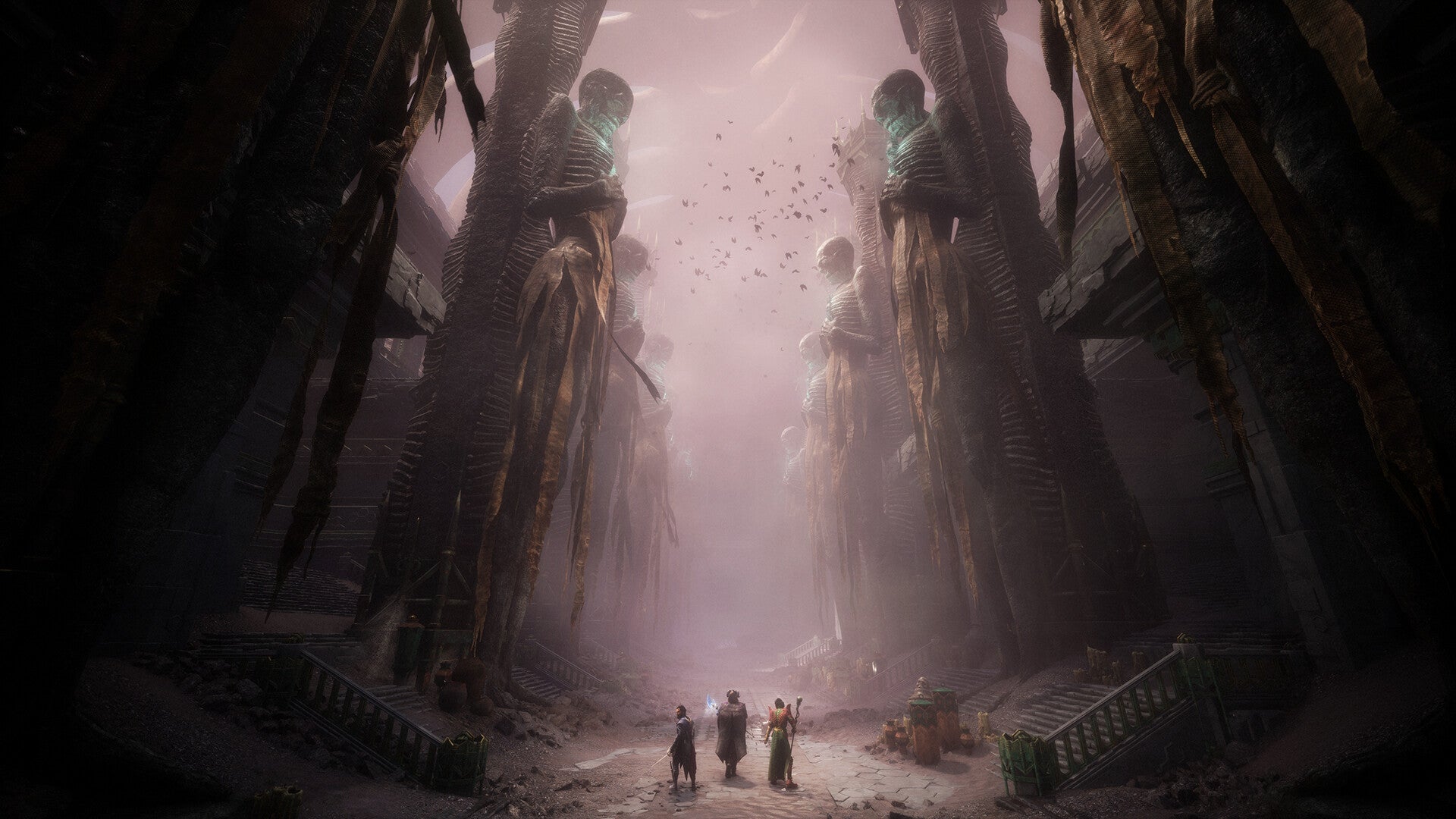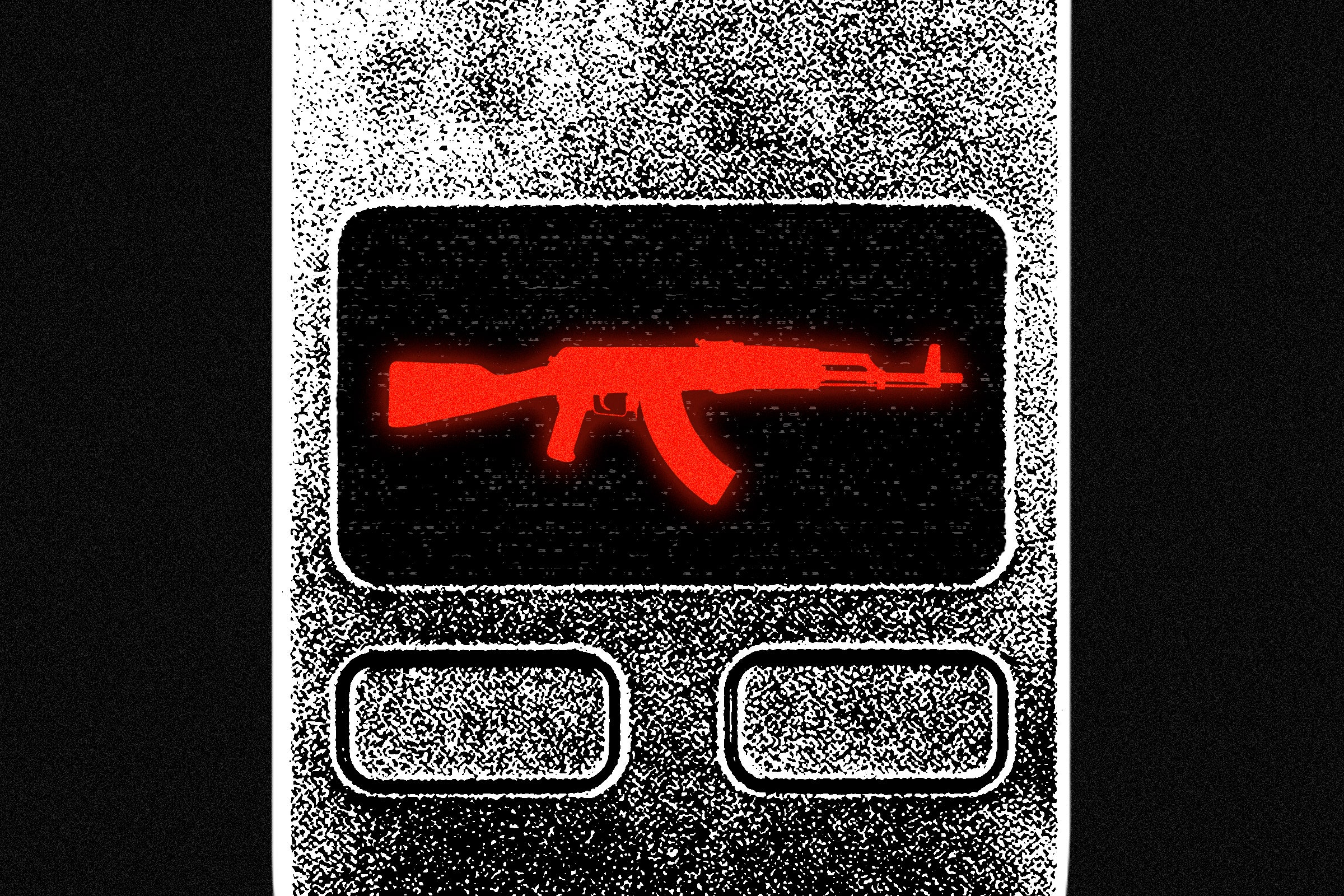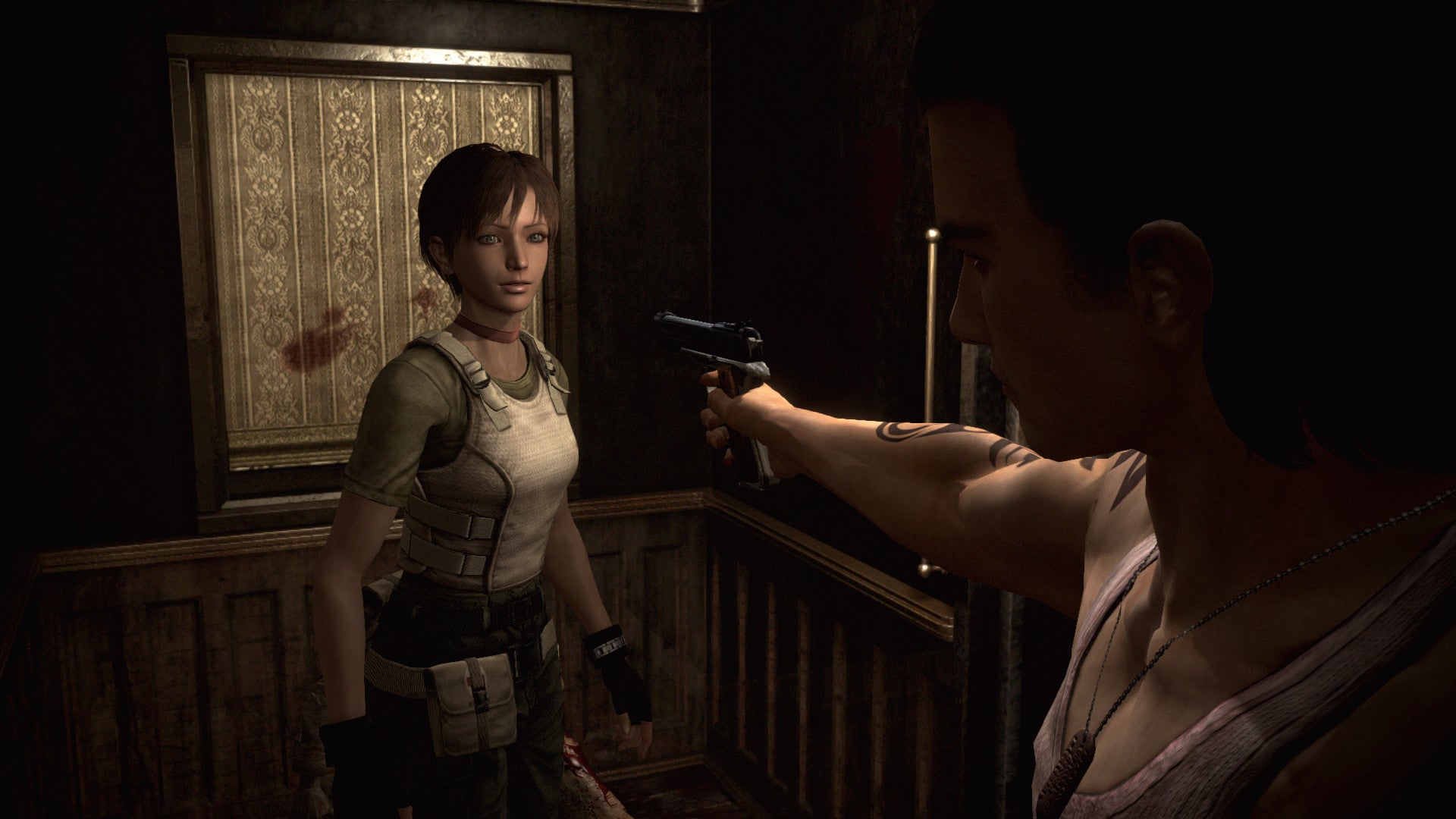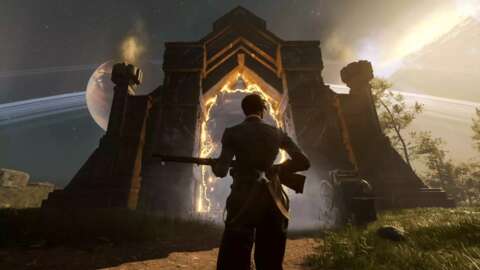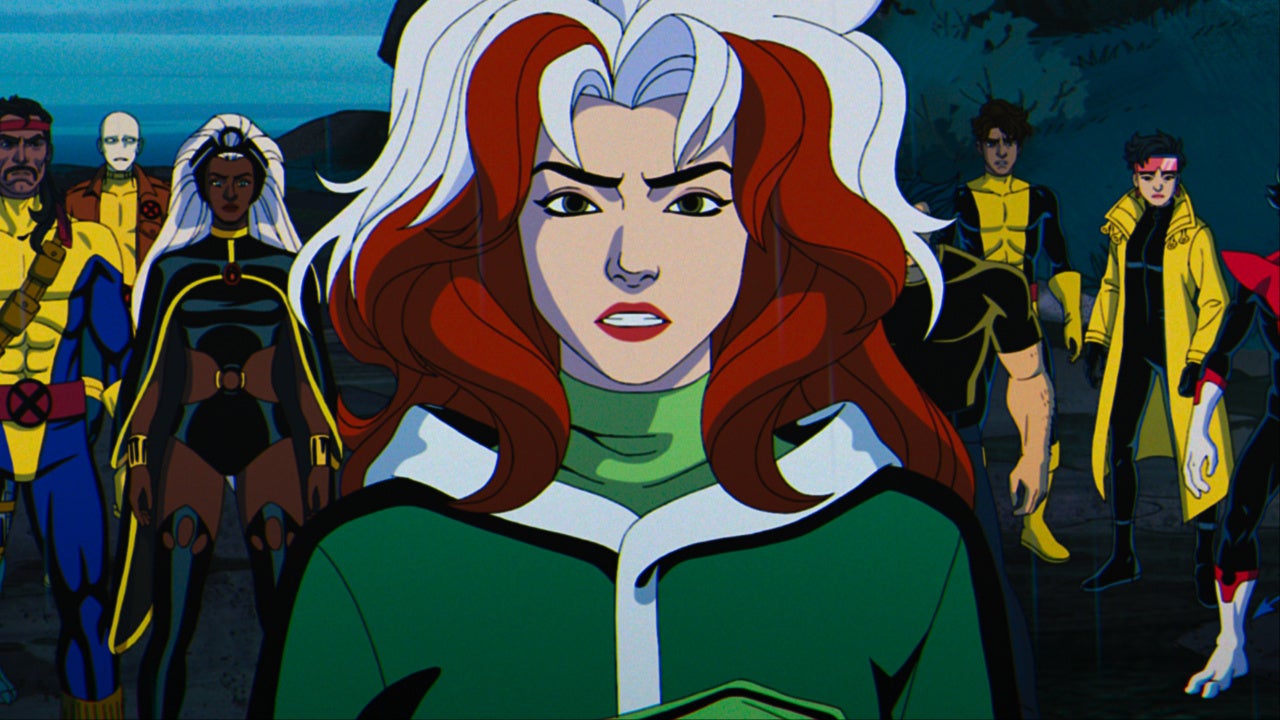Thirteen years after his wife went missing in the small town of Bright Falls, author Alan Wake is trapped inside a Dark Place that he can’t seem to write himself out of. As I sit down to type out this review of Alan Wake II, I can somewhat empathize. This is just so incomparable to anything else I’ve played in recent memory that it’s tough to work out exactly where to start. Alan Wake II is a single-player adventure that seamlessly shifts from slow-burn psychological terror to frantic survival-horror action, from gorgeously rendered game worlds to striking full-motion video sequences, and from morbid investigations to show-stopping musical surprises. It’s bloody, it's bonkers, and for the most part it's utterly brilliant. Coming in at the tail end of a bumper-crop gaming year packed with absolute bangers, Alan Wake II still manages to burn as brightly as a freshly fired signal flare.
Spanning two wildly contrasting realities, Alan Wake II’s roughly 17-hour story manages to be far more coherent than that of the original – despite its substantial increase in complexity. We pick things up in present day Bright Falls, taking control of FBI Agent Saga Anderson, who’s been dispatched to the small lakeside town to investigate the latest victim in a series of ritualistic slaughters: a body found beside Cauldron Lake with a gaping hole where his heart used to be. Saga is an instantly likable addition to the weird world that Alan Wake shares with Remedy Entertainment’s other supernatural game, Control. She’s dedicated to her casework but not above a bit of playful banter with her partner, Special Agent Alex Casey, and these opening couple of hours of mostly combat-free procedural investigation give the story a realistic grounding before the darkness starts to descend and every placid hillscape transforms into a harrowing hellscape.
Part of the reason Alan Wake II’s main serial killer mystery and its numerous subplots are so easy to keep track of is due to the caseboard found in Saga’s metaphysical ‘mind place’, which can be accessed at any moment with the tap of a button. Each new piece of evidence, character profile, or foreshadowing manuscript page found in Bright Falls and its surroundings must be manually arranged onto a branching tree of red string and palm cards pinned to the wall, corralling it all into order and keeping you focused on the case. I’m not ashamed to say that I couldn’t get through a season of True Detective (at least, one of the good ones) without having one eye on my television and the other on a Reddit thread open on my phone, so I loved having this in-built method of keeping the facts straight.
As Saga’s investigation progresses in the early moments of Alan Wake II’s story, each discovery raises more unsettling questions than it answers: Why do so many of the locals behave as though they’ve known Saga for years? Why is the janitor character from Control performing karaoke in a local town hall? And why did that corpse suddenly haul his naked arse out of the morgue and into the woods? Although its difficulty level can be adjusted to three different settings, Alan Wake II’s mood is always set to uneasy mode.
The Dark Place Beyond the Pines
The mystery deepens still when Alan Wake washes up onto the shore of Cauldron Lake, rambling about the Dark Place and surprised to learn that he’s been missing for the past 13 years. Then Alan Wake II really gets weird. From here, the perspective shifts back and forth between Saga’s search for the truth in Bright Falls and Alan’s desperate attempts to escape his doomed Dark Place dimension, with both sides gradually bleeding into each other in increasingly unpredictable and discombobulating ways – to the point that I could barely discern fact from fiction (within fiction) before eventually resolving into a supremely well-executed gut-punch of an ending that neatly ties off the bulk of the story threads while tantalizingly leaving a handful of loose ones to dangle. Remedy, if you make us wait another 13 years to tie these up (and start more) that will be much less endearing.
The alluring power of its contrasting settings only further enhances its mystery, but while the lakeside shores of Bright Falls present some stunning sunset scenes and detail-rich forest surrounds, it’s the grimy, neon-soaked New York plaza setting of Alan’s stages that really show off the immense skill of Remedy’s team of artists. Resembling the kind of nightmare you might have after spending 24 hours eating cheese and watching Taxi Driver and Mean Streets on a loop, this rotten slice of the Big Apple is a haunting otherworld that I found consistently compelling to explore, from the graffiti-covered construction areas to the menacing sprawl of subway tunnels that lie beneath its surface.
Alan’s stages also stimulated a different part of my brain by introducing some enjoyable environmental puzzles. Using a paranormal table lamp, Alan can absorb the energy from one light source and redirect it to another in order to both create a new illuminated safe haven from the evils that lurk in the shadows – but also to physically alter the world around him and open up new paths forward. It’s a dazzling trick that recalls the pulling of the light switch cord to blink in and out of the Oceanview Hotel from the Oldest House in Control, and it grows in complexity over time: determining the right sequence to manipulate multiple light sources progressively ups the challenge involved in unlocking each new area to examine.
In place of gathering evidence and arranging it on a caseboard like in Saga’s stages, in Alan’s reality you must seek out plot elements in the form of floating pairs of orbs that must be observed from the right perspective to create an eclipse that triggers ghostly, hardboiled scenes from Alan’s own Alex Casey crime novel series. These can then be rewritten into Alan’s present scenario to distort his reality into disturbing new dioramas that bring him closer towards the dark place’s exit, and reveal ominous parallels to the Bright Falls slayings that Saga seeks to solve. (And here I was thinking Michael Cera was the only Alan desperate to escape a corrupted alternate reality this year.)
To make things all the more disconcerting, Alan Wake II’s Creative Director, Sam Lake, plays both the character of Alex Casey in Alan’s world and FBI Special Agent Alex Casey in Saga’s story, and also appears as himself in a peculiar late night talk show that Alan finds himself as a recurring guest on. You might not know his name but you probably know his famous face, since it was plastered on the mug of the original Max Payne. He even does the signature scowl! Alan Wake II’s heavy meta-mystery is like a jigsaw puzzle locked inside a Rubik’s Cube that’s covered in sudokus, and it’s honestly such a strange and wonderful trip that takes more unexpected detours and recursive loops than a disgruntled Uber driver.
The Violence of the Lamps
Indeed Alan Wake II features more plots than a cemetery, and just as high a bodycount. The fundamentals of combat remain largely the same as the enjoyable flashlight-fueled fighting of the original, but its execution has been enhanced significantly. Enemies are once again literal shadows of their former selves, and the most efficient way to dispatch them is by using the boosted beam of your flashlight to burn away their cloudy darkness shields and blasting disgusting chunks of exposed flesh off their bones with your expanding arsenal of firearms. This time around glowing weak points will occasionally be revealed on an enemies’ body, and if you manage to successfully target them you can inflict substantially more damage and save a few precious ammo rounds in the process, which felt like a nice reward for taking an extra fraction of a second to carefully line up my shots.
This won’t be a big deal to anybody used to games that allow you to run, but if you’re coming back to Alan Wake along with me it is fantastic: Both Saga and Alan are blessed with an unlimited sprint ability, which marks a huge improvement to the perennially out-of-puff Alan from the original, who couldn’t run 10 yards without doubling over like an asthmatic who just took a wrong turn into a smokers lounge. Our protagonists are generally more nimble, too; the dodge button feels snappier and allowed me to more reliably duck under swinging pipes or thrown pickaxes, and it even works on the ground should you be knocked off your feet, allowing you to quickly roll out of harm’s way and avoid any potential follow-up attacks.
But challenge is part of the charm of the original, and Remedy has not forgotten that. Saga and Alan may be more fleet-footed in Alan Wake II, but ammunition and batteries remain scarce. And although it doesn’t quite rival Resident Evil 4 in terms of enemy variety, there are enough different gloomy goons to be surprised by that I could never really anticipate which breed of shadow warrior was waiting to ambush me down any given path. From hulking brutes with sledgehammers to darting wolves and freakish, multi-limbed mirror monsters that I can’t quite accurately describe, Alan Wake II consistently shuffled its deck to keep my head on a swivel and my thumb nervously twitching over the quick select weapon menu. Some enemies even throw darkness projectiles that home in on you and must either be dodged or carefully caught with your flashlight’s beam like a fighter jet’s countermeasures. I haven’t seen this much shade thrown since the last Eminem diss track.
There are some wonderfully frantic and distinct boss fights too, including a dimly lit, close-quarters scrap with a rampaging reanimated corpse who was hellbent on caving my chest in with the sharp end of a torn-off tree branch, and another later on that had me desperately burning away an arena full of darkness blobs while trying to avoid having my head separated from my shoulders by an enemy’s rifle shots from afar.
Yet oddly enough, I found that the enemy in Alan Wake II that I feared the most was the one that more often than not couldn’t even hurt me. Alan’s reality is littered with whispering apparitions, but nine times out of 10 they dissipate into wisps of smoke if you train your flashlight on them. It’s that tenth instance you need to worry about, though, because it’s likely to be an actual physical nasty waiting to ambush you from plain sight after you’ve been lulled into a false sense of security. As a result, I started second-guessing each and every human-shaped shadow – including my own – which felt perfectly in sync with Alan’s own unraveling mental state.
Writing Wrongs
Alan’s mental health isn’t the only thing here that isn’t as strong as it could be. Although the different arsenals of the two playable characters each boast their own advantages, from the heightened stopping power and reusable bolts of Saga’s crossbow to the expanded area-of-effect of Alan’s flare gun, their individual skill trees seem somewhat lopsided in their implementation. Whereas Alan’s ‘Words of Power’ skill tree features 21 different skills that can each be potentially upgraded up to three times over, Saga’s upgrades are limited to just three buffs for each firearm in her inventory, and each comes at such a high cost of the collectable manuscript scraps hidden around Bright Falls that by the time I’d reached the end credits I’d only invested in a handful of them. To be frank, they didn’t feel all that necessary on the normal difficulty setting, but perhaps they’ll be of far greater use in the planned Nightmare difficulty that’s set to be added to Alan Wake II post-launch.
Furthermore, and in contrast with Alan’s impressive environmental remixing, Saga is regularly saddled with a few too many survival-horror stereotypes, like fuse boxes to repair and combination locks to solve (although to be fair, decoding the latter does require a significant amount of brain power at times). I was also a little bit disappointed that there were no new Night Springs episodes to watch on the televisions in Bright Falls, although having said that, the commercials that are substituted in their place (starring a pair of local entrepreneurs called the Koskela brothers) were so hilariously offbeat that I still tried to track down every in-game idiot box I could find. (I’m talking about fictional commercials, that is, not poorly implemented product-placement for Verizon Wireless.)
Still, any issues I had with Alan Wake II sank without a trace like an out-of-towner in Cauldron Lake, washed away by the torrent of other things that it gets right. It undoubtedly takes a lot of inspiration from film and television, taking the Twin Peaks-meets-The Twilight Zone base of the original and mixing in the best bits of True Detective, Seven, Inception, and more into the pot. But it also folds in some nods to some modern gaming classics, blindsiding you with truly unnerving, Inscryption-like fourth-wall trickery and eerie full-motion video moments that recall 2022’s found-footage freak out, Immortality.
In one truly astonishing early game moment that I don’t want to completely spoil here, it even briefly becomes an interactive musical; as though the team at Remedy took one look at the ‘Jump Up, Super Star!’ level from Super Mario Odyssey and decided to appropriate it in the most bombastically bizarre way possible. For a glorious 20 minutes or so, Alan Wake II resembles something less like a survival-horror video game and more like a Rocky Horror Picture Show, and it had me grinning like a maniac from the ring of the first riff to the final blazing guitar solo. Although Alan Wake II has no shortage of out-of-your-seat scares, it’s moments like these that prove Remedy has approached the actual design of its long-awaited sequel completely without fear.
